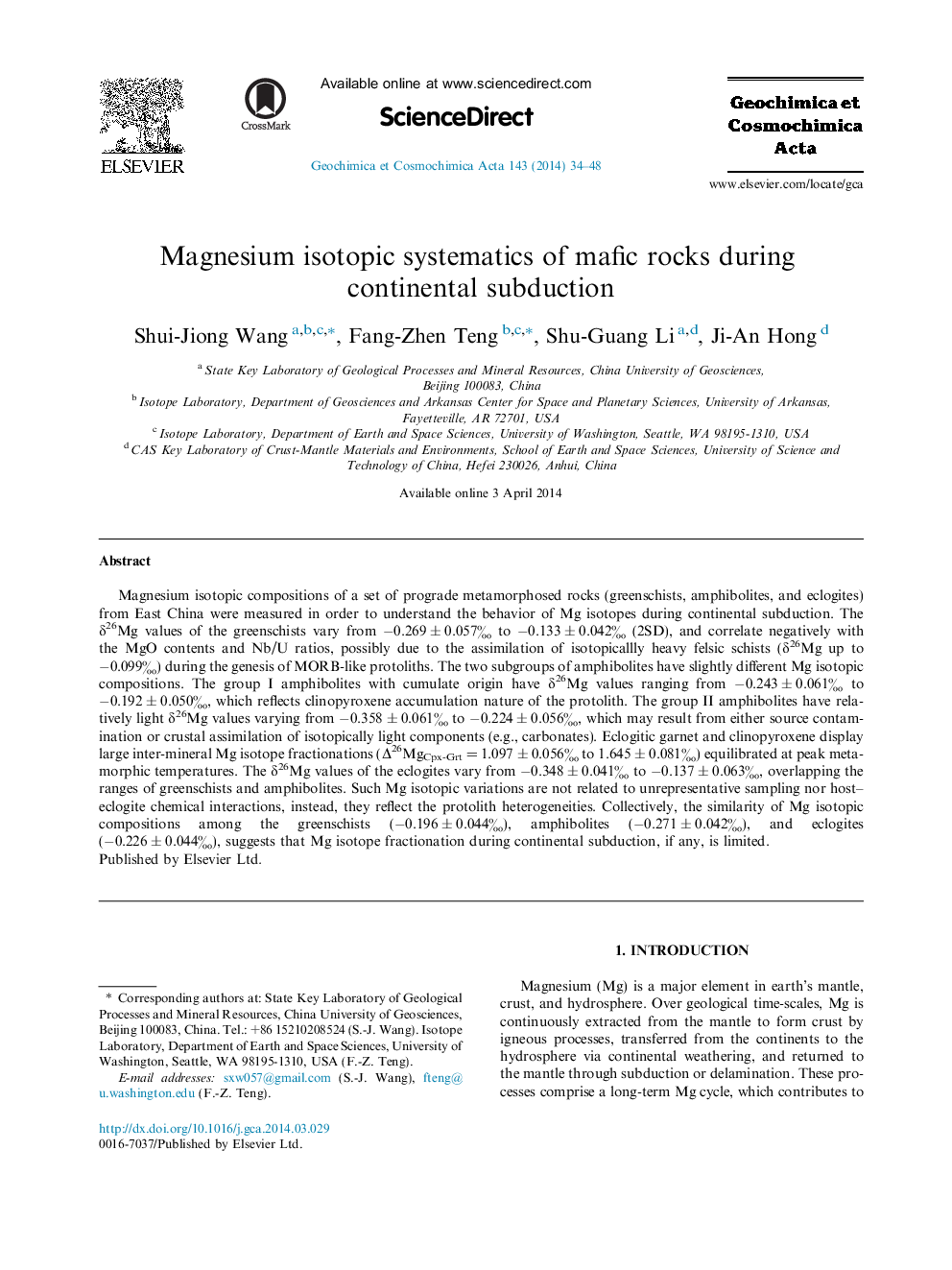| Article ID | Journal | Published Year | Pages | File Type |
|---|---|---|---|---|
| 4702056 | Geochimica et Cosmochimica Acta | 2014 | 15 Pages |
Magnesium isotopic compositions of a set of prograde metamorphosed rocks (greenschists, amphibolites, and eclogites) from East China were measured in order to understand the behavior of Mg isotopes during continental subduction. The δ26Mg values of the greenschists vary from −0.269 ± 0.057‰ to −0.133 ± 0.042‰ (2SD), and correlate negatively with the MgO contents and Nb/U ratios, possibly due to the assimilation of isotopicallly heavy felsic schists (δ26Mg up to −0.099‰) during the genesis of MORB-like protoliths. The two subgroups of amphibolites have slightly different Mg isotopic compositions. The group I amphibolites with cumulate origin have δ26Mg values ranging from −0.243 ± 0.061‰ to −0.192 ± 0.050‰, which reflects clinopyroxene accumulation nature of the protolith. The group II amphibolites have relatively light δ26Mg values varying from −0.358 ± 0.061‰ to −0.224 ± 0.056‰, which may result from either source contamination or crustal assimilation of isotopically light components (e.g., carbonates). Eclogitic garnet and clinopyroxene display large inter-mineral Mg isotope fractionations (Δ26MgCpx-Grt = 1.097 ± 0.056‰ to 1.645 ± 0.081‰) equilibrated at peak metamorphic temperatures. The δ26Mg values of the eclogites vary from −0.348 ± 0.041‰ to −0.137 ± 0.063‰, overlapping the ranges of greenschists and amphibolites. Such Mg isotopic variations are not related to unrepresentative sampling nor host–eclogite chemical interactions, instead, they reflect the protolith heterogeneities. Collectively, the similarity of Mg isotopic compositions among the greenschists (−0.196 ± 0.044‰), amphibolites (−0.271 ± 0.042‰), and eclogites (−0.226 ± 0.044‰), suggests that Mg isotope fractionation during continental subduction, if any, is limited.
